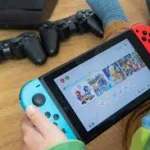Fujoshi culture is a vibrant and evolving subculture that has captivated fans worldwide. With its roots deeply embedded in Japanese pop culture, the term “fujoshi” represents far more than its literal translation, often embodying a celebration of fandom, queer representation, and shared passion. In this article, we explore the origins, evolution, and broader significance of the term, while shedding light on the role it plays in shaping contemporary fan communities.
What Does “Fujoshi” Mean?
In Japanese, “fujoshi” (腐女子) translates to “rotten girl.” While the phrase may sound pejorative, it has been reclaimed by fans who use it to proudly describe themselves as enthusiasts of Boys’ Love (BL) content—stories that depict romantic relationships between male characters. These fans are predominantly women, though the community also includes people of diverse genders and identities.
The term fujoshi contrasts with its counterpart, “fudanshi” (腐男子), referring to men who enjoy BL, and “fujin” (腐人), a more gender-neutral identifier. While initially intended to mock the perceived “rottenness” of their tastes in relation to traditional gender norms, fujoshi have embraced the label, turning it into a badge of honor.
The Historical Roots of Fujoshi Culture
From Doujinshi to BL Manga
The fujoshi subculture emerged in the 1970s and 1980s alongside the rise of shōnen-ai (early Boys’ Love stories) and doujinshi (self-published works). Popular manga artists like Moto Hagio and Keiko Takemiya were instrumental in creating the foundation of BL, which gained a passionate following among young female readers.
Reclaiming “Rotten”
The term “fujoshi” began circulating on Japanese forums in the early 2000s. It initially had a negative connotation, reflecting societal disapproval of fans who enjoyed queer narratives in media. However, the community redefined the term, using humor and self-awareness to destigmatize their interests.
Global Expansion
With the advent of the internet, fujoshi culture transcended Japan’s borders, finding enthusiastic audiences in countries like the United States, Thailand, and South Korea. Social media platforms and online fan communities have allowed fans worldwide to share their love for BL, exchanging fanart, fanfiction, and discussions about their favorite pairings.
The Appeal of BL: More Than Just Romance
Safe Spaces for Exploration
For many fujoshi, BL offers a space to explore themes of love, identity, and emotional intimacy outside the confines of traditional gender roles. The stories often feature complex characters navigating relationships in ways that resonate with fans on a personal level.
Queer Representation
While BL has been critiqued for not always authentically representing queer experiences, it has undeniably opened conversations about LGBTQ+ themes. For many fans, BL provides an entry point into broader discussions about sexuality and gender diversity.
The Power of Fandom
The fujoshi community thrives on its collaborative and participatory culture. From creating fanworks to organizing events, fans actively contribute to the BL ecosystem, fostering a sense of belonging and mutual appreciation.
Criticism and Controversies
Stereotyping and Misrepresentation
One criticism leveled at BL is that it sometimes fetishizes gay relationships, portraying them in ways that may not align with real-life experiences. This has sparked debates within the community and among LGBTQ+ advocates about the ethical dimensions of BL storytelling.
Cultural Tensions
As fujoshi culture gains prominence globally, cultural differences have led to varied interpretations and adaptations of BL. Fans and creators often grapple with balancing respect for the original Japanese context while making the content accessible to international audiences.
The Modern Fujoshi: Breaking Stereotypes
Diverse Demographics
Today’s fujoshi are as diverse as the stories they enjoy. While the subculture originated with young women, it now includes people of all genders, ages, and backgrounds, reflecting its universal appeal.
Creative Powerhouses
Many fujoshi are creators themselves, contributing to the growing landscape of fan-made content. Doujinshi conventions like Comiket in Japan and international events such as YaoiCon in the United States highlight the community’s creative vitality.
A Force for Change
Fujoshi have also been instrumental in advocating for more nuanced queer representation in mainstream media. Their passion and purchasing power have influenced publishers and creators to explore LGBTQ+ themes with greater authenticity.
Fujoshi Culture in the Digital Age
The rise of social media platforms like Twitter, Tumblr, and TikTok has revolutionized how fujoshi connect and share their enthusiasm. Hashtags like #BLManga and #YaoiFans serve as digital hubs for fan discussions, memes, and recommendations. Meanwhile, streaming platforms have made BL anime and live-action adaptations more accessible than ever, further fueling the subculture’s global popularity.
Diagram: Evolution of Fujoshi Culture
Here’s a diagram that visually represents the growth and impact of fujoshi culture:
graph LR
A[1970s-1980s: Origins] --> B[Shōnen-ai Manga Emerges]
B --> C[Doujinshi and Fan Communities]
C --> D[2000s: Fujoshi Label Reclaimed]
D --> E[Global Expansion via Internet]
E --> F[Modern Era: Social Media and Streaming]
F --> G[Fujoshi Influence on Mainstream Media]
Conclusion: Celebrating Fujoshi Culture
Fujoshi culture is a testament to the power of fandom and the ability of communities to transform criticism into celebration. By embracing their “rotten” label, fujoshi have created a vibrant, inclusive space for exploring love, identity, and creativity. As the subculture continues to evolve, its influence on global pop culture and LGBTQ+ representation is undeniable, ensuring that the spirit of fujoshi endures for generations to come.





